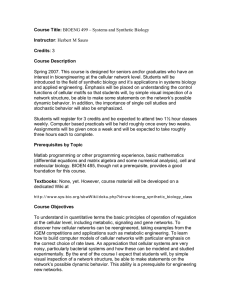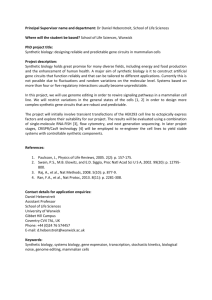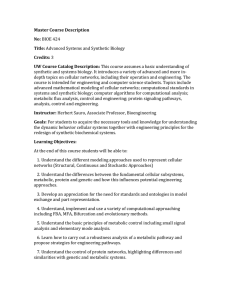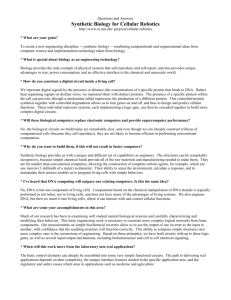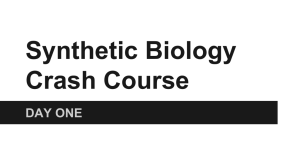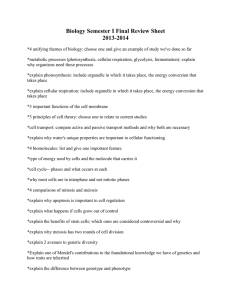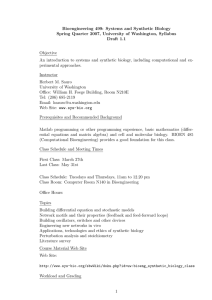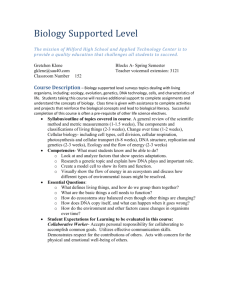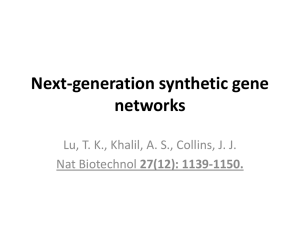Spring 2008: Systems and Synthetic Biology Syllabus: 3 Web Site: Credits
advertisement
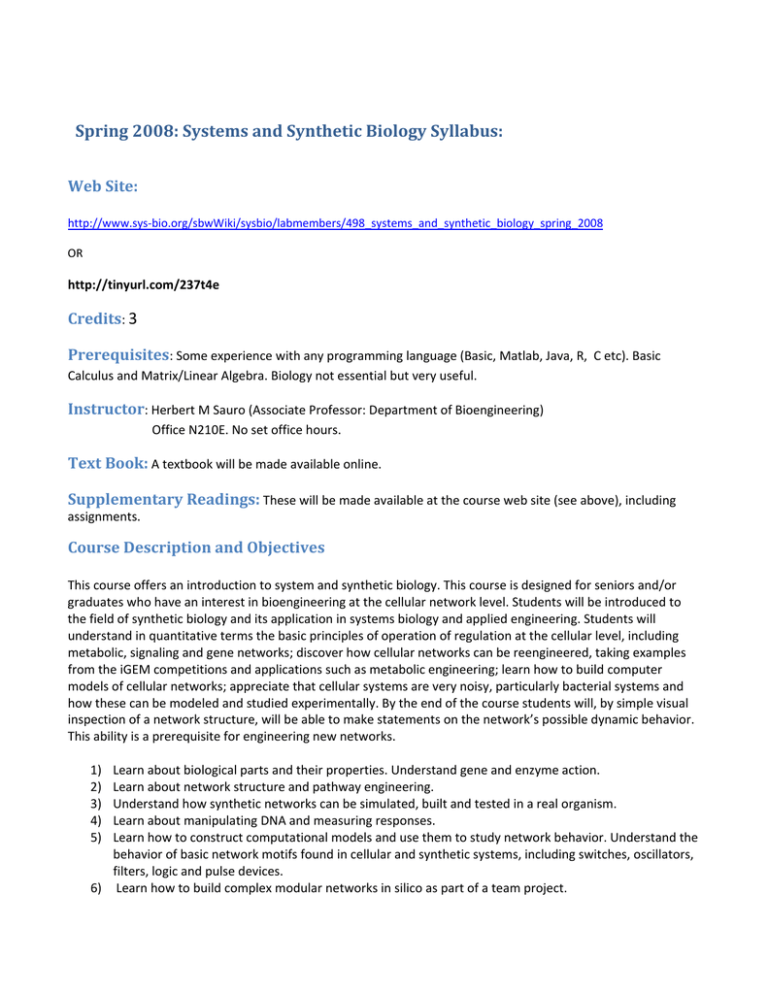
Spring 2008: Systems and Synthetic Biology Syllabus: Web Site: http://www.sys‐bio.org/sbwWiki/sysbio/labmembers/498_systems_and_synthetic_biology_spring_2008 OR http://tinyurl.com/237t4e Credits: 3 Prerequisites: Some experience with any programming language (Basic, Matlab, Java, R, C etc). Basic Calculus and Matrix/Linear Algebra. Biology not essential but very useful. Instructor: Herbert M Sauro (Associate Professor: Department of Bioengineering) Office N210E. No set office hours. Text Book: A textbook will be made available online. Supplementary Readings: These will be made available at the course web site (see above), including assignments. Course Description and Objectives This course offers an introduction to system and synthetic biology. This course is designed for seniors and/or graduates who have an interest in bioengineering at the cellular network level. Students will be introduced to the field of synthetic biology and its application in systems biology and applied engineering. Students will understand in quantitative terms the basic principles of operation of regulation at the cellular level, including metabolic, signaling and gene networks; discover how cellular networks can be reengineered, taking examples from the iGEM competitions and applications such as metabolic engineering; learn how to build computer models of cellular networks; appreciate that cellular systems are very noisy, particularly bacterial systems and how these can be modeled and studied experimentally. By the end of the course students will, by simple visual inspection of a network structure, will be able to make statements on the network’s possible dynamic behavior. This ability is a prerequisite for engineering new networks. 1) Learn about biological parts and their properties. Understand gene and enzyme action. 2) Learn about network structure and pathway engineering. 3) Understand how synthetic networks can be simulated, built and tested in a real organism. 4) Learn about manipulating DNA and measuring responses. 5) Learn how to construct computational models and use them to study network behavior. Understand the behavior of basic network motifs found in cellular and synthetic systems, including switches, oscillators, filters, logic and pulse devices. 6) Learn how to build complex modular networks in silico as part of a team project. Schedule: Class times 11.30 to 12.20 Tuesday, Thursday and Friday. Class room is yet to be allocated. Attendance: Attendance is not required but highly desired. Assignments and projects are not optional. Academic Conduct: As with all course work, cheating in exams and plagiarism is expressly forbidden. In team work, students should indicate in the project report how work was divided up. Format: The course is a mixture of lectures, research literature readings, computer work and one wet lab project. Assignments: One per week that will include a combination of theory and computer lab work. End of Term Project: There will be an end of term project to design and construct a computer simulation of a complex network that can carry out some specific function of your choice ‐ A complex network is defined as one that has three or more functional units operating together. The last week will be devoted to students presenting their projects to the class. Projects will be conducted by teams made up of no more than two students. Mid Term: There will be a short midterm quiz at week 5. Final Exam: There will be a final exam during the exam week June 11. Grading: Grading will be divided between assignments, final project and exam. Assignments: Project: Final Exam: Mid Term: 30% 30% 25% 15% Topic List: Week 1: Introduction to Basic Cellular and Molecular Biology Week 2: Kinetics of Enzyme Action and Gene Expression – Device Characterization Week 3: Network Structure ‐ Including Pathway Engineering Week 4: Computational Methods – Simulation and Analysis Week 5: Network Circuits ‐ Feedback loops, Switches, Oscillators Week 6: Network Circuits ‐ Feedforward loops, Pulse generators, Logic and Filter Circuits Week 7: Manipulating DNA and measuring network responses Week 8: Synthetic Networks ‐ Examples and Applications of Synthetic Networks Week 9: Designing Complex Networks ‐ Team Project Week 10: Student Team Presentations of Projects (15 min presentation)

